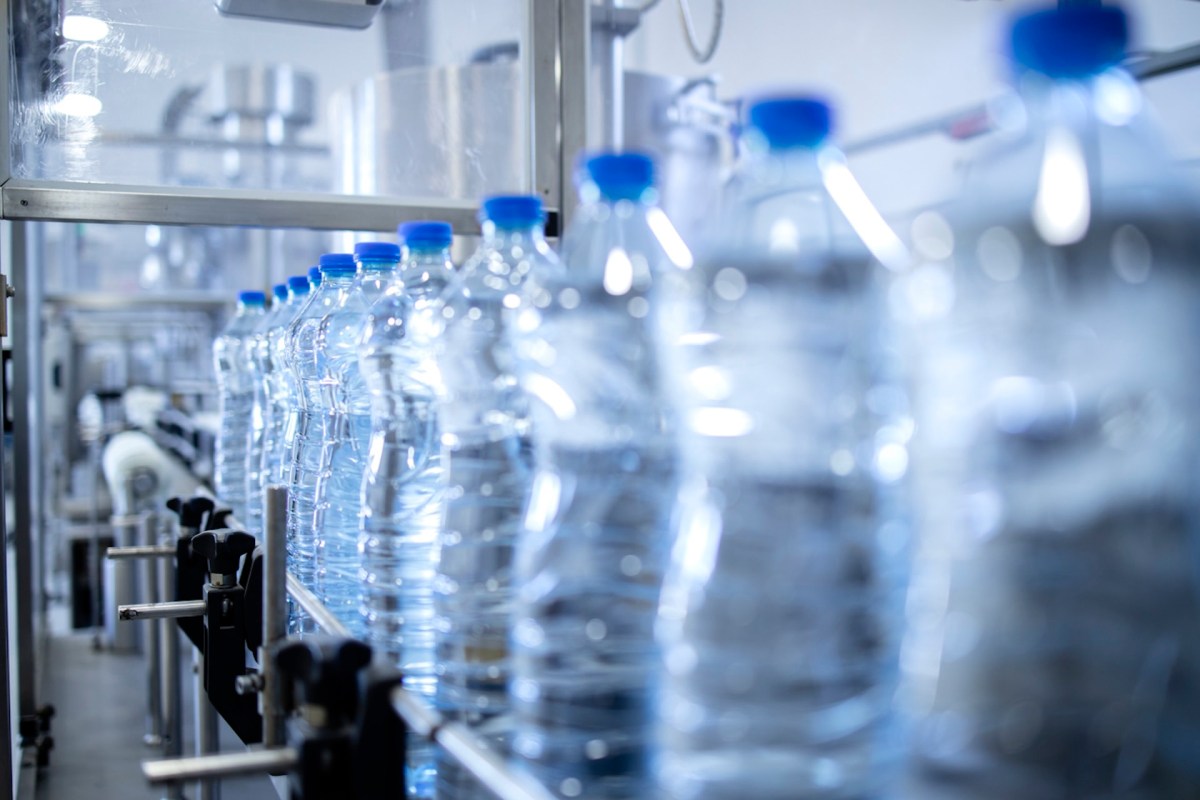Glug glug. Do you hear that? It's the sound of hundreds of thousands of tiny plastic pieces swirling around every time you take a sip of bottled water.
What's happening?
A January study published in the Proceedings of the National Academy of Sciences looked closer than ever before at three leading bottled water brands.
Using a special microscope and a new technique called stimulated Raman scattering, the scientists involved in the study discovered an average of 240,000 plastic fragments (110,000–370,000 particles) per liter of bottled water.
About 90% of those particles were nanoplastics (particles under 1 micrometer in length), while the rest were microplastics (particles under 5 millimeters but larger than 1 micrometer). A micrometer is 1,000 times smaller than a millimeter.
The finding, which recorded "orders of magnitude more than the microplastic abundance reported previously in bottled water," raises health concerns that warrant further investigation.
Why is this important?
In recent years, there has been increasing global attention on microplastics and nanoplastics, which break off from larger plastic sources and are now found everywhere — from polar ice caps to mountain peaks and even in Arctic air and clouds. Microplastics and nanoplastics infiltrate ecosystems and make their way into drinking water and food.
Nanoplastics' tiny size allows them to pass through the digestive system and lungs, entering the bloodstream directly and reaching organs, including the brain and heart.
Nanoplastics may also cross the placenta and harm unborn babies, as the Guardian has reported.
Despite limited research on their impacts, some early lab studies have linked nanoplastics to toxic effects such as reproductive abnormalities and gastric issues, among other possible effects.
What can I do to stay safe?
If the idea of microplastic-filled H2O doesn't whet your whistle, listen to geochemistry professor Beizhan Yan, a co-author of the study.
"If people are concerned about nanoplastics in bottled water, it's reasonable to consider alternatives like tap water," Yan told Agence France-Presse.
If you're still concerned about contaminants in tap water, an affordable pitcher or faucet filter can reduce contaminants. Another option is to fill up the reusable way: sturdy glass or metal bottles last for years and save cash.
Or, next time you eat out, request water cups to go that you can use at home.
With small, money-conscious tweaks, you'll stay hydrated and keep more plastics out of your digestive system — and that's something to toast to.
Join our free newsletter for weekly updates on the coolest innovations improving our lives and saving our planet.









